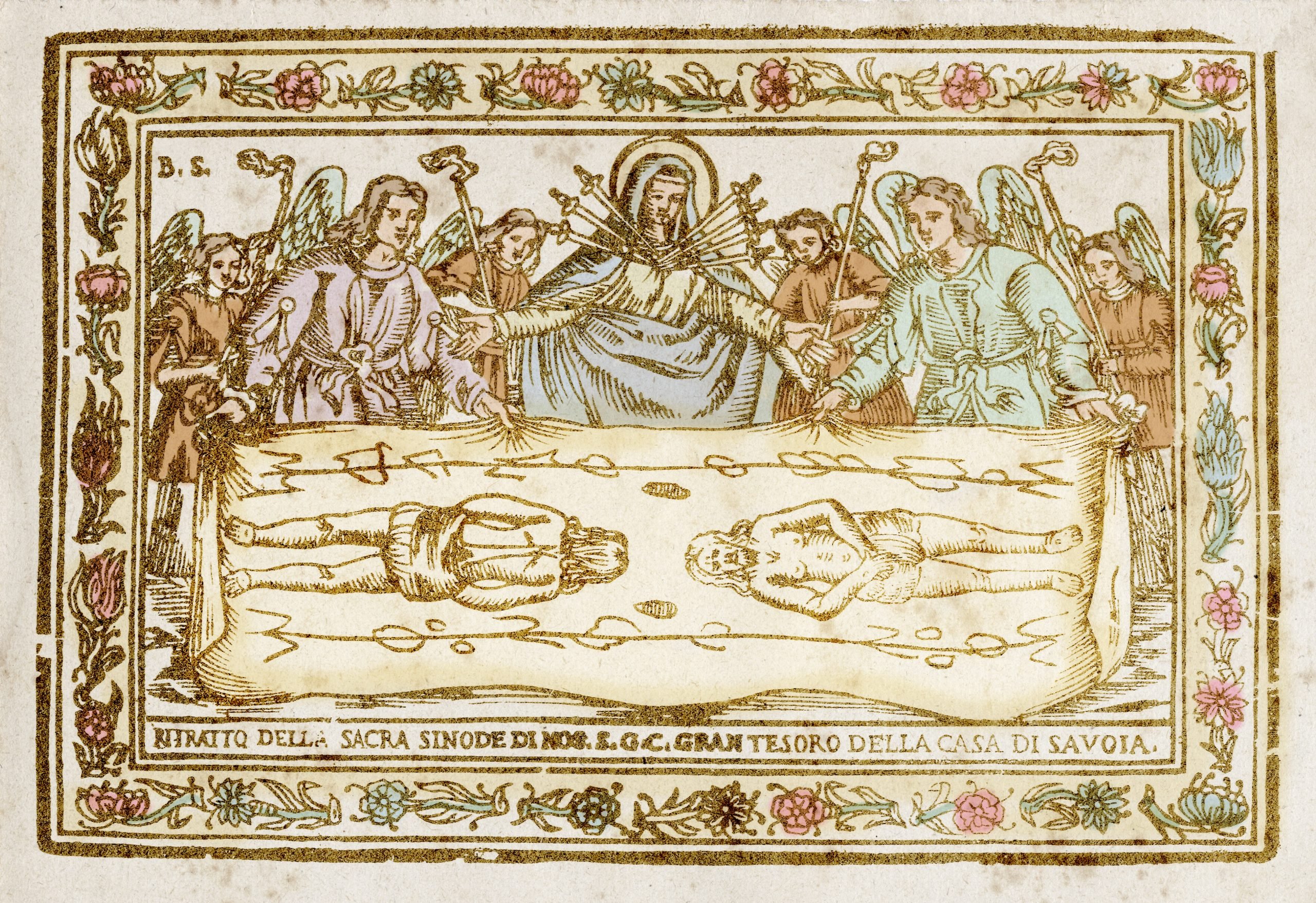
The Shroud of Turin is, in a way, a mirror: it shows the beholder whatever they wish to see. For devoted Christians, it’s the holiest of icons: the linen cloth that wrapped Jesus Christ’s crucified body. For skeptics, it’s the grandest of hoaxes: a medieval forgery that has been duping worshippers for 700 years.
The 14-foot-long cloth has markings that correspond the placement of the wounds of Jesus’s crucifixion. It also bears the image of a gaunt, long-haired, bearded man, whose appearance, in the absence of paint or pigment, some consider to be a miracle.
Over the past century, science has intervened, and chemists, physicists, microbiologists, and botanists have all promised to confirm or deny the shroud’s authenticity. Spoiler alert! None has so far succeeded—not sufficiently to silence the other side, in any event.
The latest argument arrived in August 2024, courtesy of Italy’s Institute of Crystallography, which declared that the shroud was indeed 2,000 years old. In keeping with tradition, a counter study is expected.
Detail of the Shroud of Turin. Photo: Bettmann / Getty Images.
The debate stretches back to the shroud’s earliest appearance, in the 14th century, when it turned up among the possessions of Geoffroi de Charny, a crusade-loving French knight.
The Bishop of Troyes, a powerful regional religious figure, was not impressed by the shroud’s artistry or provenance, and declared it a forgery in 1389. In a series of letters with Pope Clement VII, the Bishop stated that the shroud had already been labeled a forgery by his predecessor and that the Pope should put a stop to Geoffroi encouraging Christians to worship a false idol. Clement labelled it a man-made, though sanctioned, representational icon.
Six decades later, de Charny’s granddaughter, Margaret, fled south amid the tumult of the Hundred Years’ War, taking the shroud with her. The House of Savoy voiced no qualms over the shroud’s murky backstory and bought it from her in exchange for two castles. Margaret was excommunicated for taking the shroud from her ancestral home.
From its secluded base in Chambéry, in southeastern France, the House of Savoy was emerging as a continental force through diplomatic and military savvy. Jesus’s burial shroud offered it the religious cachet it lacked. After miraculously escaping a fire in 1532, the shroud was transported to the dynasty’s new capital of Turin, which was chosen as such for the strategic protection the Alps offered against the French crown.
The Shroud of Turin. Photo: Marco Destefanis / Pacific Press / LightRocket via Getty Images.
The shroud has been squirreled away in Turin’s St. John the Baptist Cathedral ever since, appearing only sporadically for hallowed public viewings. A two-month long display in 2015, for instance, drew two million visitors.
Scientific inquiry began in 1898, when Umberto I, Duke of Savoy and King of Italy, allowed it to be photographed. The negative showed an eerily defined man who evoked the popular image of Christ from the New Testament gospels. The relic now had a devilishly compelling image, and its fame spread.
Until 1969, this image was all researchers (and conspiracy theorists) had to work with in their attempts to answer two central questions: when was the shroud created and how was Christ’s image made?
Then, in tandem with providing preservation advice, scientists were sporadically invited to conduct testing on the shroud (a process accelerated after it was bequeathed to the Holy See in 1983). Today, it’s stored away from view in an airtight case behind bulletproof glass in the Chapel of the Holy Shroud.
The Shroud of Turin on view at Turin Cathedral, 2015. Photo: Marco Bertorello / AFP via Getty Images.
A marathon five-day research study in 1978 found no sign of artificial pigments and claimed the blood stains were composed of hemoglobin, a protein that appears in red blood cells. (A 2015 study would go further, labelling them AB blood type.) One researcher claimed the blood was in fact the red pigment iron oxide, and a forensic science study in 2018 argued against the shroud’s authenticity by showing that the patterns of blood on the shroud were consistent with multiple body positions. Believers replied that such markings likely happened as Jesus’ body was transported.
The landmark study came in 1988, when the Vatican allowed three universities to carbon date the relic. All results suggested the shroud came from between 1260 and 1390 C.E. Opponents pushed back, accusing the universities of shoddy methodology and saying that the sample used came from a portion that had been repaired following the 16th-century fire. The latest study, from the Institute of Crystallography, supports such assertions.
As for how the image of Christ was transferred onto the linen cloth, theories range from the vaguely plausible—it’s a rubbing made from a bas-relief statue—to the fanciful: it’s some type of primitive medieval photograph or the trace of a burst of radiant energy emitted during Christ’s transfiguration.
Not that the Vatican is concerned with such speculative games; it doesn’t recognize the Shroud of Turin as a relic of Jesus’s physical form, but merely as a mighty symbol.
The Hunt explores art and ancient relics that are—alas!—lost to time. From the Ark of the Covenant to Cleopatra’s tomb, these legendary treasures have long captured the imaginations of historians and archaeologists, even if they remain buried under layers of sand, stone, and history.